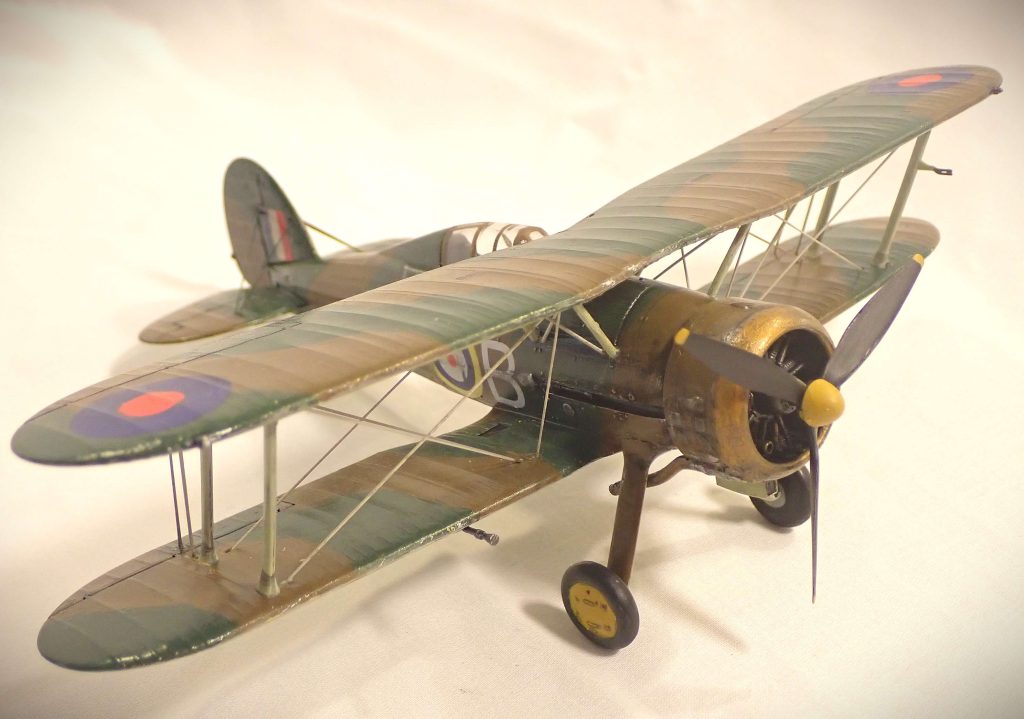The Gloster Gladiator was a British tractor driven biplane fighter used by the RAF and the FAA as the Sea Gladiator. It was the last biplane fighter to be ordered by the RAF and was even deemed obsolete before it entered service in favour of the newer monoplanes. However, this iconic fighter proved its worth in most operational theatres during WW2, most notably in the defence of Malta. The type was the last biplane to be manufactured for the RAF also the first biplane to feature an enclosed cockpit. It was armed with two Vickers .303 synchronised machine guns either side of the cockpit and two underwing pods housing a Lewis gun. The Gladiator was exported to many European countries as well as Iraq, Russia and China.
Developed from the Gloster Gauntlet, already a front-line aircraft, the Gladiator was a shortened version. The Gladiator Mk.1 was initially delivered in 1936 becoming operational in January 1937. The Air Ministry ordered a batch of Mk.2 Gladiators due to the delay of the monoplane programme. However, the delivery of the 252 aircraft took until April 1940. By this time the much better monoplane fighters were in full production.
The Gladiator saw action in foreign service in China and with the Finnish Air Force in conflicts as WW2 approached. The type was on the frontline of operations during winter 1939 and the ‘Phoney War’ of 1940 before being thrust into action on May 10th with disastrous results. The Gladiator was no match for the German onslaught with many losses incurred. The type was relegated to home defence although a number were involved in the initial fight for the German invasion of Norway.
In early 1940 a stock of 18 Gladiators were delivered to Malta on HMS Glorious. By April Malta needed fighter protection but, according to legend, only three Gladiators could be assembled from the crates delivered. This led to the myth that the three Gladiators, Faith, Hope and Charity, defended the air space over Malta for ten days. Albeit fantastical, there were many more aircraft involved in the defence of Malta. The Italian fighters should have been no match for the Gladiator, but the British pilots with their obsolete machines performed miracles winning many dogfights and shooting down large numbers of bombers. However, Charity was lost on July 31, Faith not long after and Hope was destroyed by a bombing raid in May 1941.
By mid-1941 the Gladiator was removed from frontline service but still used in air defence roles in the Middle East, especially the Suez Canal area.
There are several surviving aircraft on display in museums in the UK, Sweden, Norway and Malta. The recovered fuselage of ‘Faith’ N5520 is on display in Valletta, Malta. At least two Gladiators are still airworthy: one N5903 at Duxford in the UK and the other L8032 with the Shuttleworth Collection, also UK.
